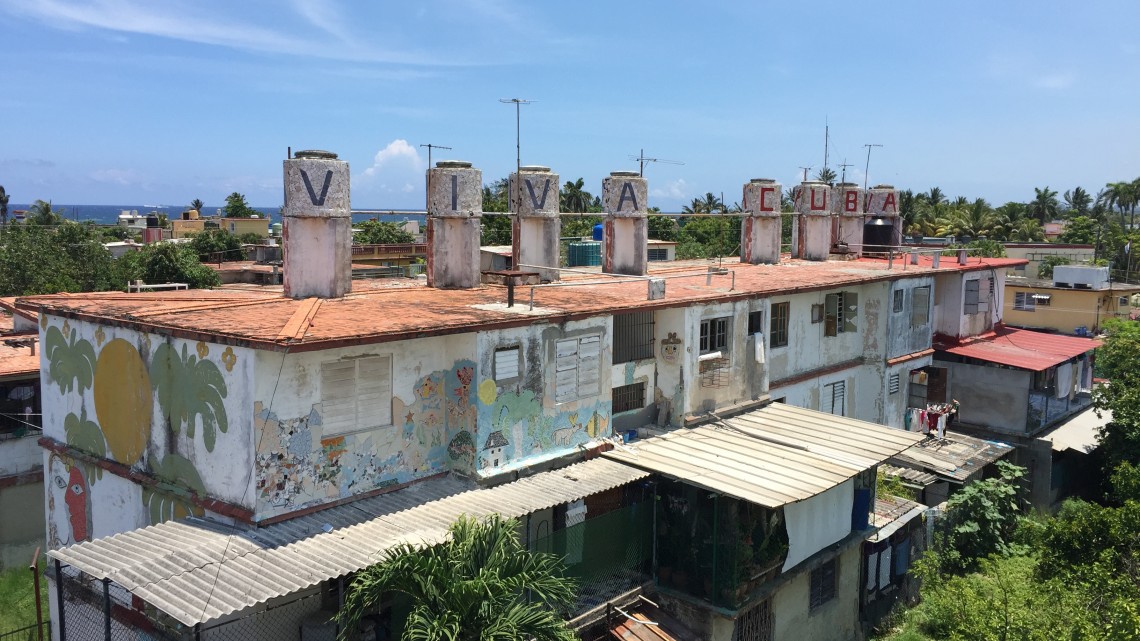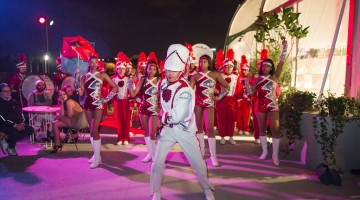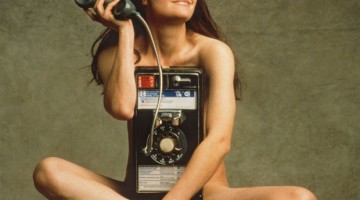Bienal de la Habana 2015
May 22 – June 22, 2015
With the improvement of U.S./Cuban relations being a hot topic in recent months, it is no wonder Americans descended on Cuba in droves for the country’s 12th Bienal. Groups from every art and cultural institution arrived daily to explore “opportunities” before it was “too late” and “everything would change.” Although Cuba is rich in history and culture, the architecture, cars, and lifestyle seem, to the American eye, to be stuck in different decades of the last century, in a state of disarray and decay. The Bienal, however, was surprisingly well organized, displaying Havana’s diverse and healthy art scene, through installations, performances, open studios, and exhibitions. Although it is difficult to foresee major changes occurring in Cuba in the near future, it is clear that the arts are on par, if not above, current trends in the rest of the world.
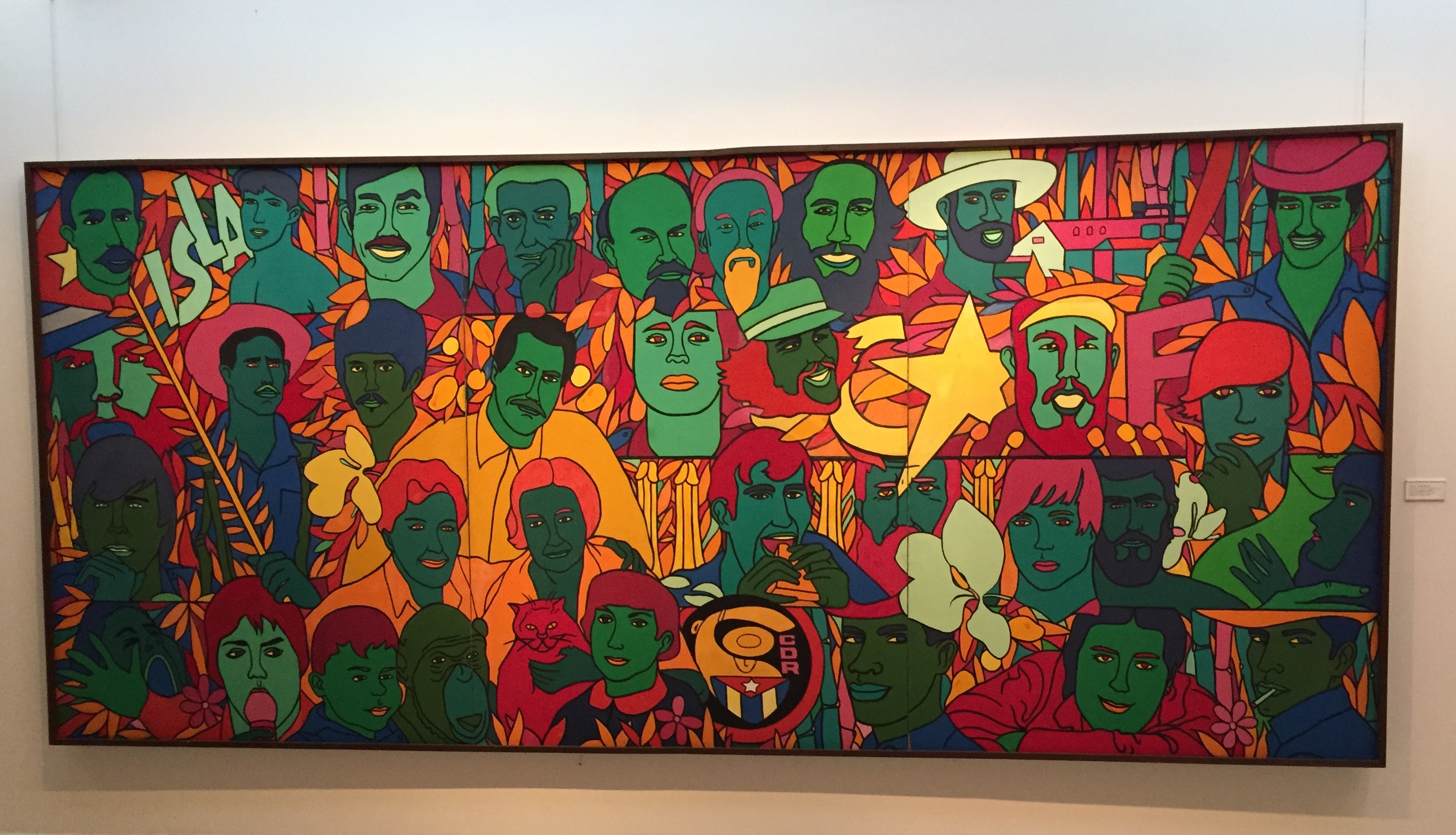
Raul Martinez. “La Isla (The island),” oil on canvas, 1970.
Surprisingly, the Cuban government is one of the key players of the country’s vibrant art community. In 1961, Fidel Castro and Che Guevara conceived the National Art Schools, which became an incubator for the arts. Now known as the Instituto Superior de Artes (ISA), the architecturally-renowned building, with its female anatomy-inspired design, inhabits the site of a former country club and continues to produce talented artists. Graduates of the ISA are highly regarded in Cuba, with most alumni continuing as professors at the Institute and recognized by both the community and government-sponsored galleries.
One the first studios I visited was Pedro Pablo Oliva’s in Old Havana. Oliva is a graduate of ISA and is well known both in Cuba and abroad. He has received many awards, including the National Prize of Fine Arts. However, his work became controversial and is prohibited from being shown publicly in Cuba. He continues to work in his studio and conducts community projects in Pinar del Rio, the province of his birth. During the Bienal, the space in Old Havana served as a viewing area of his current works of dissidence. His use of “Utopito,” a utopian male character, is a play on words, meaning both utopia and a small penis.
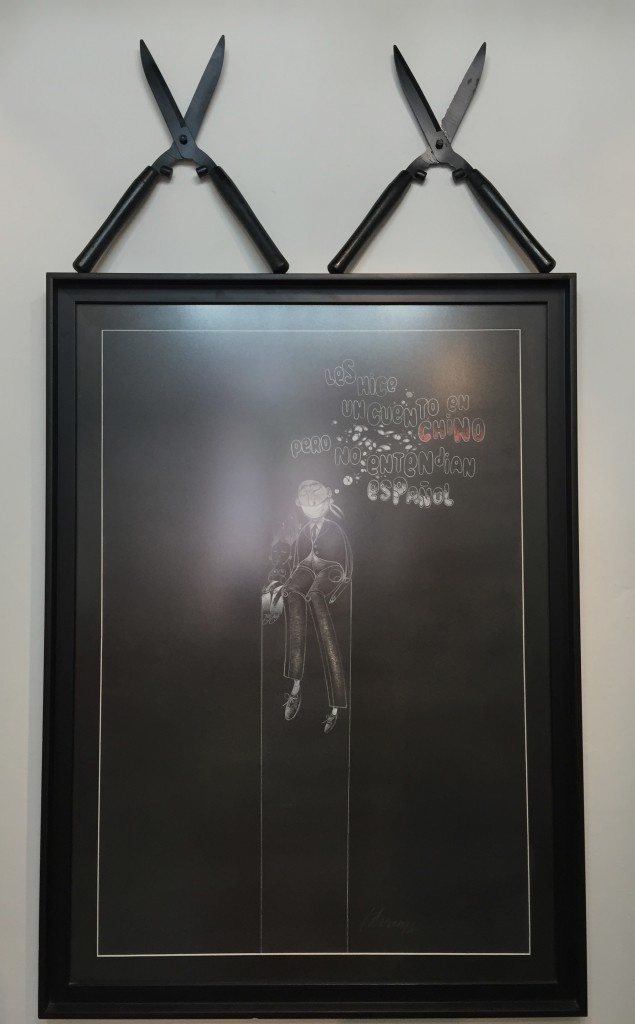
Pedro Pablo Oliva, “I told them a story in Chinese but…they didn’t understand Spanish…” Utopito’s strange wanderings Utopias and dissidence Series, mixed media on cardboard, 2012. Photo Credit: Yelena Furman
It is interesting that Oliva is both highly recognized in Cuba as an artist and his work is prohibited from public viewing. There seems to be an invisible line that Cuban artists cross, when they go from being celebrated to being denounced by the regime. Most of the artists are very clear on the meaning and subject matter of their artwork, with the majority directly addressing issues of Cuban life and the government. However, politicized artists do not seem to be punished for their dissidence. Contrary to what one might expect, they are rewarded with visibility. For example, the Cuban Collection at the Museo Nacional de Bellas Artes highlights works from the beginning of the 20th century to the present that employ political commentary and critique.
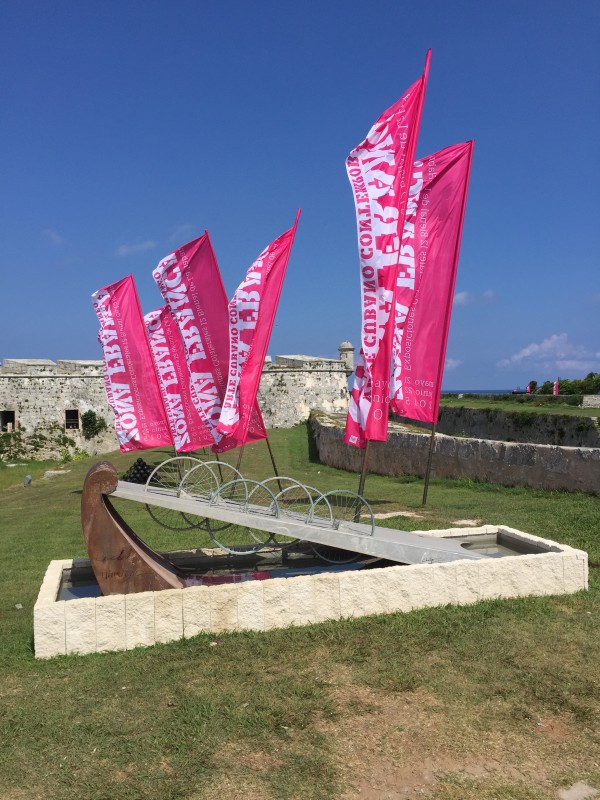
Fortaleza de San Carlos de la Cabana. Photo Credit: Yelena Furman
Entering Fortaleza de San Carlos de la Cabana, one of the Bienal sites, on opening day May 22nd, we were greeted by magnificent views of the 18th Century fortress with hot pink signs and banners flying overhead, creating a whimsical and ingenious effect. Inside La Cabana, the outdoor space was adorned with art installations, while the caverns were set up like booths at an art fair. The art itself was both enticing and transformative, with the space acting like caves enveloping the exhibitions into a truly cohesive unit. With over 240 artists represented, it is impossible to adequately describe the breadth and variety of artistic expression that confront visitors. Personally, I was transfixed by the work of Angel Ramírez, whose transformation of recycled objects into seemingly medieval ones, masterfully reveals conceptual messages of Cuban identity and humanity as a whole.
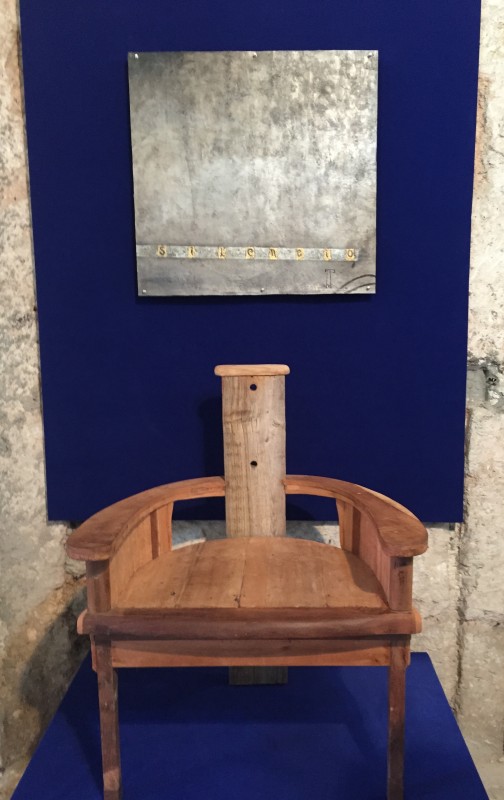
Angel Ramírez, “Silencio,” mixed media installation, 2014. Photo Credit: Yelena Furman
Although most artists are independent of representation, their works can be seen in galleries throughout Havana. While the artists give a standard (but negotiable) 30% commission to these galleries, they are quite keen to run their own studios and estates. Most notably, the prices are similar whether purchasing directly from the artist or from a gallery—and both are negotiable. Being an artist seems to be one of the most lucrative careers in Cuba, apparently above the restrictions we all believe to be imposed on the Cuban people. They are granted visas to travel and exhibit worldwide, have foreign bank accounts and own property.
This makes one wonder—is this all real, or an elaborate hoax? How is it that while new living quarters have not been built since before the fall of the USSR, artists are affluent by Cuban standards? As young artists set up private studio and art spaces in areas like Miramar, the surrounding dwellings look like the worst slums, and for the people living among the rubble, the grass is literally greener when they gaze into these artists’ residences. However, some artists give back to the community, like José Rodríguez Fuster, who created “Fusterland” by rebuilding his neighborhood into a ceramic amusement park. Another good example is Kcho (Alexis Leiva Machado), one of the most well known Cuban contemporary artists of today, who provides free Internet and includes residents of his neighborhood in his endeavors.
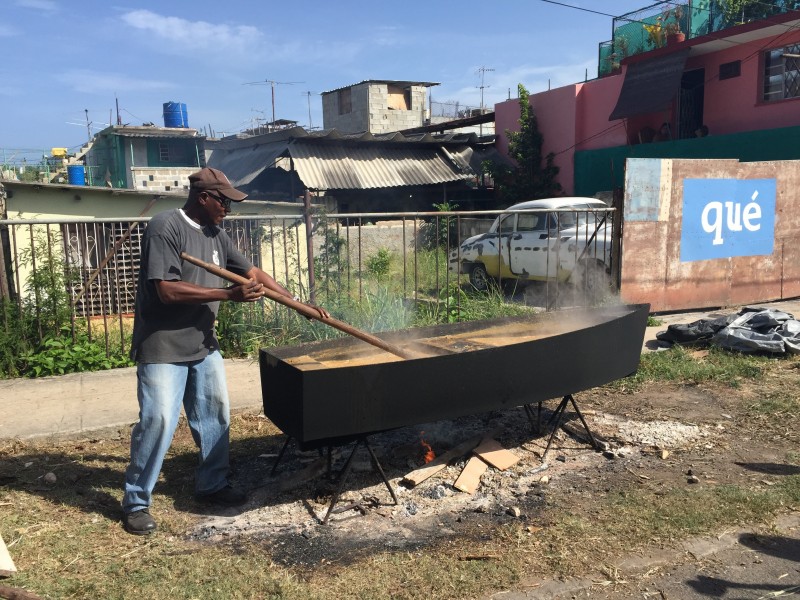
Outside of Kcho’s studio during opening preview – this performance involves soup being made for the neighborhood.
So while Americans are now trying to look in, Cuban artists have long been looking out. The works seen during the Bienal present similar techniques, substances and materials as seen on a gallery walk in Chelsea. At first surprising, this feeling wears off and the need to accumulate takes over. Pricing comes into the picture at this point, from bargaining for original works under $50 to purchasing an Oliva oil painting for approximately $20,000, and everything in between. There is definitely a buying opportunity for any range and collector. While the art itself is comparable to what we see in the rest of the global art market, the price scale is relatively low.
Access to the Internet is hard to come by in Cuba, so most artists do not have a serious online presence. Accordingly, as Cuba gains exposure from its newfound détente with the United States, the prices of Cuban artwork are likely to climb. Artists whose names we will soon hear include Adrian Fernandez, Alex Hernandez and Frank Mujica, (all located at 311Art Space); Sandra Ramos, a superb printmaker; Karlos Perez, who has already been noticed by the Bronx Museum; works by Diana Fonseca of the Women’s Collective at Studio 7ma y 60; and the talented Ruben Alpizar. These artists, along with countless others, will be making headway with this new access to the U.S., as shown from the 7th Bienal de la Habana, the last one with American participation, which cultivated the vibrant art scene we see in Cuba today.
With groups from Harvard, Smith, The Chicago Institute of Arts, and the Bronx Museum (which is holding an exhibition at El Museo Nacional de Bellas Artes de La Habana) attending the Bienal in Havana, it is safe to say there is surging American interest in Cuban art. However, Cuban living conditions are not yet entirely up to American standards and it will clearly take more than politics and the arts to get “everything to change”. A robust and creative framework is there, and while conditions in Cuba are unlikely to improve as fast as the U.S. would like, the surge in American interest—and U.S. dollars—means the artists and the art scene in Cuba can look forward to the brightest future in decades. Indeed, only a few days into the Bienal, most studios were left bare.
